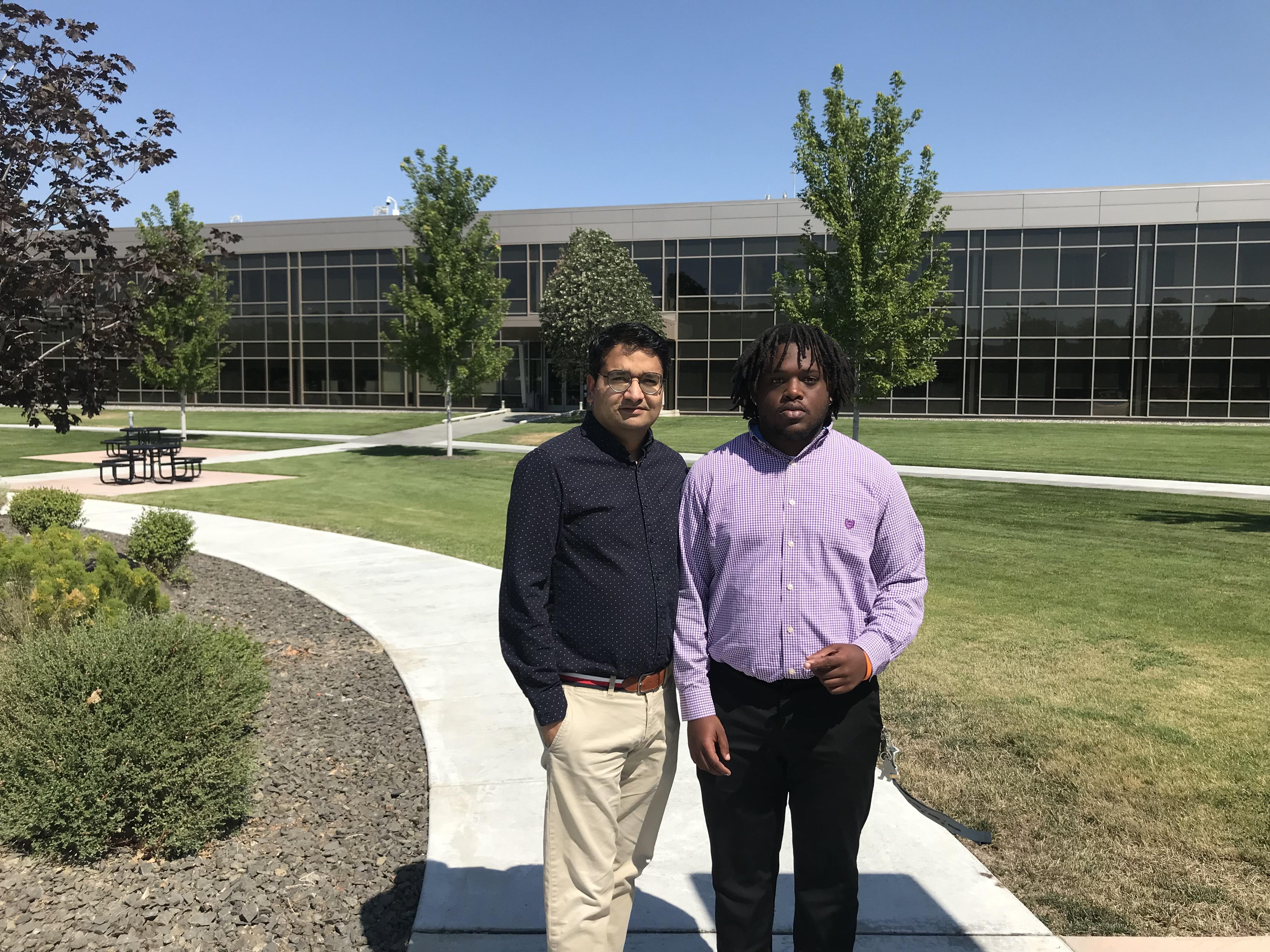Interns for New Consortium Radiate Success
Mentors pivotal in expanding perspectives for underrepresented students

This summer, Sarah Olocha, Shaniya Pettway, Dewayne Maye, Germany Harris, and Rayonna Redmon became the first interns of the Minority Serving Institution Partnership Program Partnership for Radiation Studies (PaRS) Consortium at PNNL.
Photo courtesy of PaRS interns
The encouragement of one professor brought five students from Alabama A&M University to Richland, Washington, for the summer.
Germany Harris, Dewayne Maye, Sarah Olocha, Shaniya Pettway, and Rayonna Redmon became the first interns of the Minority Serving Institution Partnership Program Partnership for Radiation Studies (PaRS) Consortium at Pacific Northwest National Laboratory (PNNL).
Igniting interest in PaRS internships
The interns credit their physics professor, Stephen Babalola, for introducing them to PaRS. He knew it would be a life-changing opportunity for them.
“From personal experience, I believe that internships at national laboratories provide great opportunities to the students,” said Babalola, director of the Materials Research Laboratory at Alabama A&M University. “It is very difficult to explain the advantages and impacts of the internship to the students unless they personally experience it. This is why I strongly encouraged the students to intern through PaRS.”
At PNNL, the PaRS partnership is led by Senior Scientist Cheslan Simpson, who Babalola has worked with for more than 10 years, and Physicist Manish Sharma.
Matched with mentors
The interns were brought to PNNL as visiting researchers. At the start of their internship in May, the students were paired with mentors.
- Pettway and Redmon were mentored by Isidro Garcia.
- Harris and Olocha was mentored by Ryan O'Mara.
- Maye was mentored by Manish Sharma, who received the 2023
Laboratory Director’s Award for Outstanding Contributions to STEM Education inTeaching and Mentoring.

Their summer workload included Python and machine learning courses, the Scientist Spotlight workshop, nuclear summer school, and research projects.
“It is important for students to not only learn what PNNL does but to also be introduced to new concepts and skills that they can use,” said Simpson. “The hope is for the students to see PNNL as an option for a future career in STEM.”.
The projects gave them a glimpse of the research being done at PNNL. Maye, who worked closely with Sharma, investigated a novel approach to deter nuclear terrorism and developed a proof of concept for this novel idea.
“I never knew what I wanted to do,” said Maye. “It was nice meeting other people and exploring a different career path than what I had imagined. Manish has also taken every opportunity to teach me, show me, and support me.”
Sharma wanted to share the interdisciplinary nature of the nuclear science field, in which he believes anyone can excel.
“Nuclear science is a fascinating area, and I wanted to communicate the real-field application of nuclear science in tackling scientific challenges in national security,” he said. “Specifically, bridging the gap between the radiation physics and mathematical principles taught in their undergraduate courses and the ongoing research at Department of Energy national laboratories like PNNL.”
Harris and Olocha worked with O’Mara to evaluate environmental data of natural disasters to assess radiation during the past 10 years.
Pettway and Redmon worked on projects related to border security. They used their newly acquired skills in Python programming and SolidWorks to help solve specific tasks and challenges.
"It’s important for them to get a better idea of the work and opportunities a national laboratory has to offer,” said Garcia. “Both Shaniya and Rayonna are early in their engineering college education, and this internship was beneficial in helping them solidify their career interests. I also encouraged networking around the Lab and participation in Lab events.”
Pursuing passions
The networking was a highlight for all the interns, especially when it came to connecting with other researchers who looked like them.
“Growing up, there weren’t that many Black female chemists, so I didn’t expect to see many when I came here,” said Harris. “Just coming here and seeing so many Black, female scientists, it changes how you feel about going into this career.”
Olocha, who comes from a Nigerian family, agrees. She also appreciated the advice she’s received while at PNNL and believes different backgrounds can benefit PaRS.
“I was a transfer student from a community college and started as a general ed student,” she said. “Someone told me to not just work to work, but to find my passion. I need to find the reason why I’m doing what I’m doing and narrowing down what I want.”
While each intern gained different perspectives, their teachers and mentors believe in their continued success.
“I wanted the students to understand that there are so many paths to great STEM careers, and that’s what I hoped the PaRS internship will achieve,” said Babalola. “From the students’ feedbacks, I believe the goal is not only achieved, but the 2023 PaRS interns will serve as ambassadors to their peers in spreading the great and diverse opportunities at national laboratories.”
The PaRS Consortium is funded by the Minority Serving Institution Partnership Program within the Department of Energy’s National Nuclear Security Administration.
As a member of the PaRS Consortium, the activities support PNNL’s goals in nuclear nonproliferation and radiation detection research.
Published: September 6, 2023